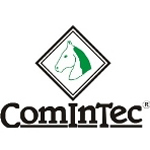 Movement can be transmitted or transformed by various mechanical appliances or mechanisms or systems such power transmission components.
Movement can be transmitted or transformed by various mechanical appliances or mechanisms or systems such power transmission components.
The organs of propulsion and movement are primarily axles and shafts, cylindrical, elongated on which are mounted and fastened the mechanisms for transmission of motion. The organ that transmits motion is called shaft or motor axis or core, while one that is broadcast is called shaft movement led.
The transmission of rotary motion from one axis to another takes place by means of combined use of wheels which can be clutch, gears, pulleys, straps and pulleys with chains.
Are marketing categories of transmission, to be chosen according to the specific application.
A first category is that of mechanical systems: they consist of mechanisms whose purpose is to transmit mechanical energy in the form of movement. At the same time may also be able to change the type of movement, i.e. you can switch from one motion to rotary motion and vice versa, or from one rotary motion to the left to a rotary motion to the right.
Another type of mechanism is that of direct contact transmission, which allows you to transfer a continuous circular movement to another organ that must move to the same way. With this kind of transmission can vary the strength of the movement by putting
to contact wheels of different diameters and varying the transmission ratio (rotational speed of the driven wheel). The mechanisms of this type are the most widely used friction wheels and sprockets.
We then gears, which are mechanisms consisting of a pair of gears (clock mechanic) or a cogwheel and a worm (a Rev counter), or by a cogwheel and a rack (mountain railway).
Another category of organs d transmission is developed by means of flexible elements, which can be used to transmit the rotary motion between two shafts that are at a distance between their. This is the case of straps, chains, ropes.
Finally, remember to link transmission with rigid bodies that manage to transform the motion from linear motion to rotary motion and vice versa, and are divided into lever system (connecting rod-crank and tilt glyph) and low-profile systems (oscillating glyph).
